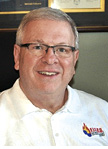
In last month’s column, I reviewed a report issued last year by the National Fire Protection Association (NFPA) titled “Renovation Needs of the U.S. Fire Service.”
This was the fifth such report developed by the NFPA, with previous reports issued in 2001, 2005, 2010, and 2015. It is an assessment of five specific needs of fire stations:
- Number of stations over 40 years old (61 percent).
- Stations without diesel exhaust emission systems (59 percent).
- Stations without backup power
(35 percent). - Stations without accommodations for females (no percentage available).
- Mold remediation (no percentage available).
The 17-page report provides data on what the cost would be across the nation to remedy these shortcomings.
Related Content
- Keeping It Safe: Fire Stations: A National Dilemma
- Keeping It Safe: Financial Impact of Firefighter Injuries
- Keeping It Safe Archive
Item 1 (age of fire stations) is a focal point of the report. It is revealing to note that 61 percent of fire stations are more than 40 years old while the percentage 20 years ago was 32 percent. An estimated cost to replace or bring existing stations up to current day needs is estimated to be in the $70 to $100 billion range.
EDUCATION KEY
So, what must the fire service do? The answers aren’t easy. However, to get a start, the fire service must become educated and, in turn, the stakeholders and the public must be educated. There are good ways and not-so-good ways to do this. Emotional arguments won’t work. Data and solid information must be marketed in ways that people understand.
How does the fire service get educated? There are annual symposia available that offer subject matter experts including fire service personnel experiences and architects who specialize in fire station design. Many fire departments that have been successful in getting what they need also brought their local government’s facilities manager, elected officials, and other stakeholders. It becomes an eye-opening experience, with the common comment, “We’d have never thought about that.”
HEALTH AND SAFETY
The list of “We have never thought about that” responses seems to be infinite. It is of utmost importance that firefighter health and safety be front and center of fire station design considerations. When health and safety drive the design, the station will be more functional. Specific areas include, but are not limited to, exterior, traffic flow, personal protective equipment (PPE) cleaning and storage, diesel exhaust, finishes, fitness/wellness, etc.
The exterior should “uplift” the community. Considerations include security, lighting, and bollards. Traffic flow is often overlooked. Access to the apparatus with a minimum of 90-degree turns is a way to decrease response times. Traffic flow is also paramount in the “hot zone” design. The apparatus bay is the hot zone, and a natural and uninterrupted flow to the adjacent hot zone off the bay that transitions to the “warm zone” that, in turn, transitions to the “cold zone” requires careful thought and planning. Included in this transition are PPE and equipment cleaning processes, showers, and PPE storage.
There are very specific requirements for installing washers/extractors in a fire station. These include space requirements, utility requirements, and floor mounting. In addition to washers/extractors, we are now seeing the emergence of washing units for self-contained breathing apparatus, face pieces, and other elements of the PPE ensemble. There are also considerations for installing cleaning tables/surfaces and sinks. With all the cleaning equipment, there are corresponding requirements for drying equipment. As for PPE storage, there should be a dedicated room with independent ventilation and motion-activated lighting to minimize UV degradation.
Diesel exhaust extraction remains a critical component of a healthy fire station. Source capture systems are available in different designs and features, and there is a need for secondary “whole bay” air cleaning to address contaminated equipment off-gassing.
Wellness/fitness issues are often not given thorough consideration, and new information is coming forth. Fitness rooms should have a wall of full glass so they are visible to the others in the station. There are line-of-duty deaths that occur in the exercise room where the deceased firefighter is not discovered for many minutes. We are now learning that station finishes, if done correctly, can help minimize firefighter behavioral disorders, such as post traumatic stress disorder. Carpet is no longer considered an acceptable floor covering. And, station design, if done properly, can help with sleep deprivation issues.
Considering the above issues, the fire service must become educated so it can educate its governing body. As stated before, many fire departments have convinced the people “who need to know” to learn with them. One approach is to develop a video of your current station shortcomings and how they have a negative impact on firefighter health and safety to show your governance and to have on your Web site for the community to see. Better yet, arrange for a station tour. Education will lead to better decisions. And, always deliver the best in customer service—be nice! With the public supporting you, it is more difficult for the governance not to support you.
ROBERT TUTTEROW retired as safety coordinator for the Charlotte (NC) Fire Department and is a member of the Fire Apparatus & Emergency Equipment Editorial Advisory Board. His 40-year career includes 10 as a volunteer. He has been very active in the National Fire Protection Association through service on the Fire Service Section Executive Board and technical committees involved with safety, apparatus, and personal protective equipment. He is a founding member and president of the Fire Industry Education Resource Organization (F.I.E.R.O.).

